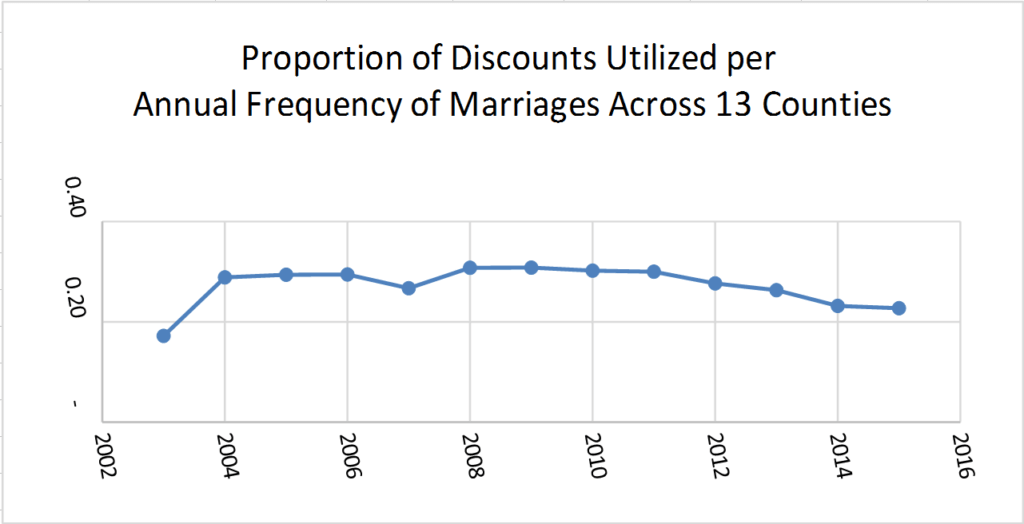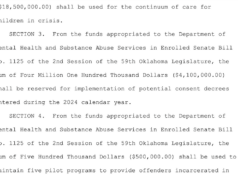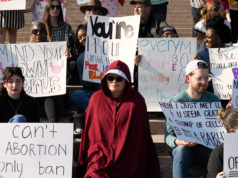
After a ramp-up peak followed by an eight-year plateau, participation rates for Oklahoma marriage license discounts have been steadily declining for the past four years.
Based on Oklahoma Supreme Court Network (OSCN) data pulled from 13 counties covering 2003 to 2015, an average of one-third or less of all marriage-license applicants have taken advantage of a $45 discount. This fee reduction is available to couples who have participated in premarital counseling or education, in accordance with Title 43 §5.1 & 5.2.
(Note: The data were pulled from only 13 counties because the full state court data files were managed by two separate companies and divided between two separate servers until this year. As such, the OSCN data was the only data available and not the other frequencies that cover many more of the rural counties.)
Larger counties such as Oklahoma, Tulsa, Cleveland, Payne and Canadian were included in the analysis, representing well over half of all marriages in a given year. Therefore, it’s likely that these data are a good indicator of couple behavior — especially considering that many counties not accounted for represent more rural territory. Generally speaking, those living in rural areas have less access to programs that qualify for the discount.

Although public attitudes favor premarital education …
There could be several factors contributing to the lowering participation rates, but “attitude about premarital work” isn’t likely the largest reason. A 2008 national survey demonstrated that premarital education is widely considered a positive step. For example, 1,112 respondents from 10 large metropolitan areas across the U.S. were asked if they would recommend premarital education to a couple they knew might be getting married. Eighty percent responded with “definitely yes” or “yes.” When asked if they personally would consider using relationship education, 80 percent again responded “definitely yes” or “yes.”
Bolstering the “it’s a good thing” case, consistent research findings show that premarital education programs appear to be effective at improving couple communication; some research-based programs show a protective factor of lowering divorce risk as well as other benefits.
… several factors work against couples using it
It’s more likely, then, that decreasing participation rates could have to do with awareness, lack of motivation to seek out a service that may be cost-prohibitive for a savings of only $45 on the license fee, or some other human error or system barrier.
For example, a couple who preferred not to be identified reported that they went through the steps of attending premarital counseling then printed off a letter their counselor had e-mailed. After arriving at the courthouse, they were told they were ineligible for the discount because their letter “wasn’t an original copy.” Standing in the busy court clerk’s office, they made the decision to go ahead and pay the $50 because it “wasn’t worth the hassle to drive over and get a hard copy from her.”
We may also see continued decrease in participation because many couples were being served through free programming offered by Oklahoma Marriage Initiative events, frequently attended by hundreds of couples preparing for marriage each year. The contract to provide these free services was cut by the Oklahoma Department of Human Services last year in response to budget-failure processes.
Laws like the marriage-license fee discount, in theory, should serve the public as win-win initiatives. But whether it’s lack of public awareness, low motivation or simply an economic problem, this one seems to be losing its way.
(Note: Thanks to Dr. Alan Hawkins of Brigham Young University for assistance with this data set.)





















